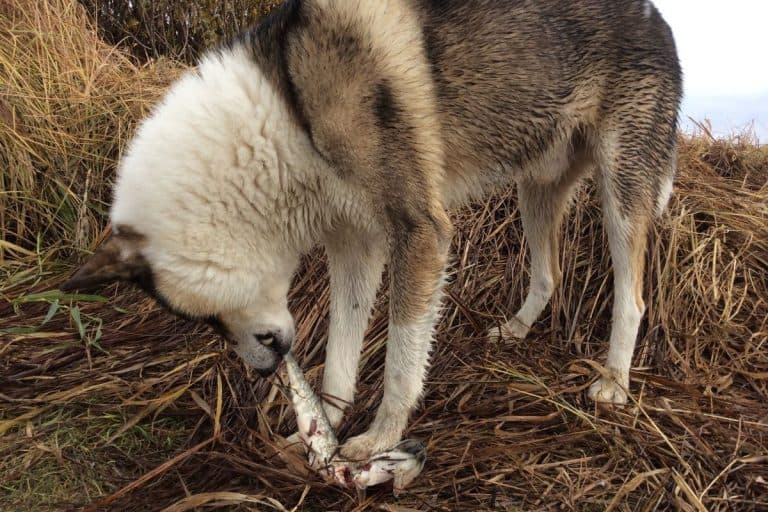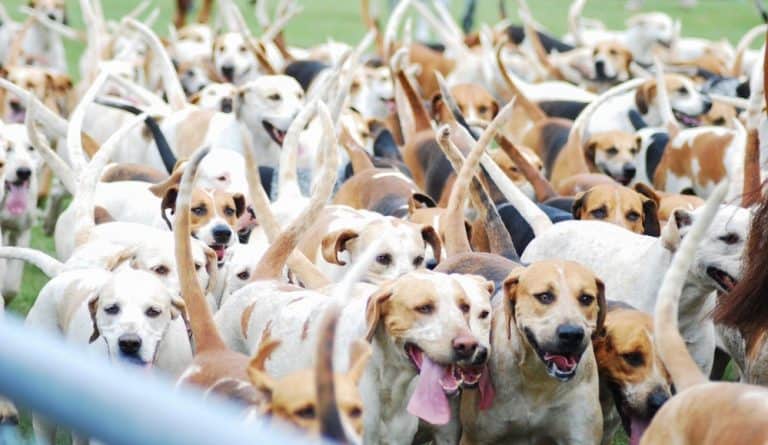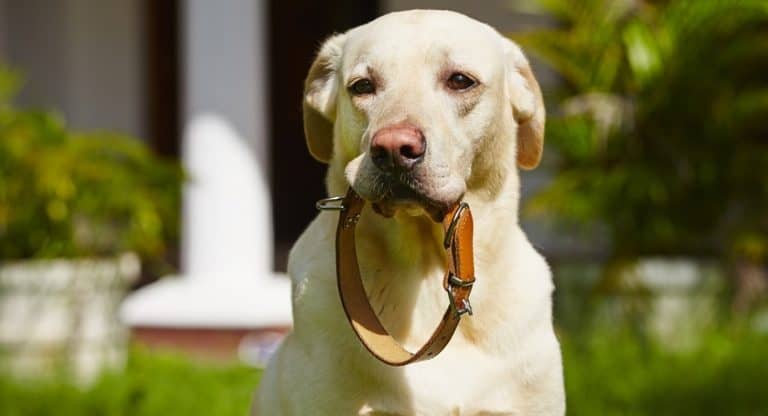Chesapeake Bay Retriever Growth Chart – Size & Weight Chart
Chesapeake Bay Retrievers are friendly dogs that get along well with children, strangers, and other animals.
If you have just adopted one, ensure that you keep a Chesapeake Bay Retriever growth chart with you so that you can monitor their growth throughout the important milestones of their life.
Are you wondering how big a Chesapeake Bay Retriever gets?
Typically, a male Chesapeake Bay Retriever weighs about 65 and 80 pounds with a height of around 23 and 26 inches while a female weighs about 55 and 70 pounds with a height of around 21 and 24 inches.
This article will provide you with more information about the Chesapeake Bay Retriever weight chart, health conditions that can affect them as a breed, factors affecting their growth, and how you can help them maintain a healthy weight.
When Is A Chesapeake Bay Retriever Fully Grown?
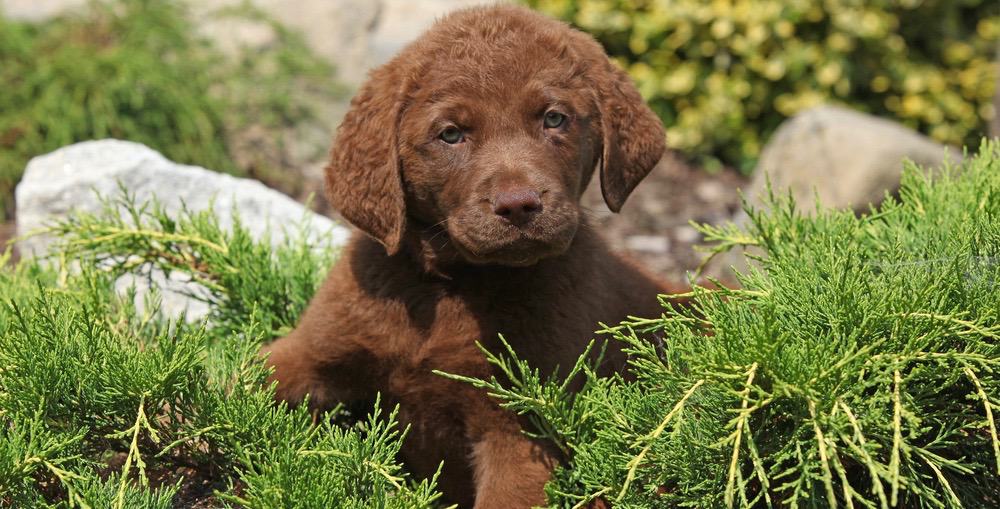
Since the Chesapeake Bay Retriever is a larger breed, their growth takes longer compared to smaller breeds. On average, they stop growing at around 12 and 18 months.
First, they stop growing physically, then it will take longer for them to mature mentally, emotionally, and behaviorally depending on a particular dog.
How long it takes for your dog to fully grow depends on their genetics, health, nutrition, and how comfortable their home is. If their home is stressful, they can grow at a slower rate compared to other dogs.
Chesapeake Bay Retriever Weight Chart
Monitoring the weight of your dog using the Chesapeake Bay Retriever weight chart will ensure that they are maintaining an ideal weight for their age group.
Measuring the weight of your regularly means that you will be aware if there are any changes.
Overweight or underweight dogs are susceptible to health conditions such as diabetes, joint issues, and heart disease.
Therefore, if you notice that your dog’s weight has changed, speak to your vet about it and they can advise you.
As adults, Chesapeake Bay Retrievers should weigh between 55 to 80 pounds.
Chesapeake Bay Retriever Puppy Weight Chart
| Male | Female | |
|---|---|---|
| Weight | 65 - 80 lbs | 55 - 70 lbs |
| Height | 23 - 26 inch | 21 - 24 inch |
| Full Grown | 18 months | 18 months |
Chesapeake Bay Retriever Growth Chart – What To Expect
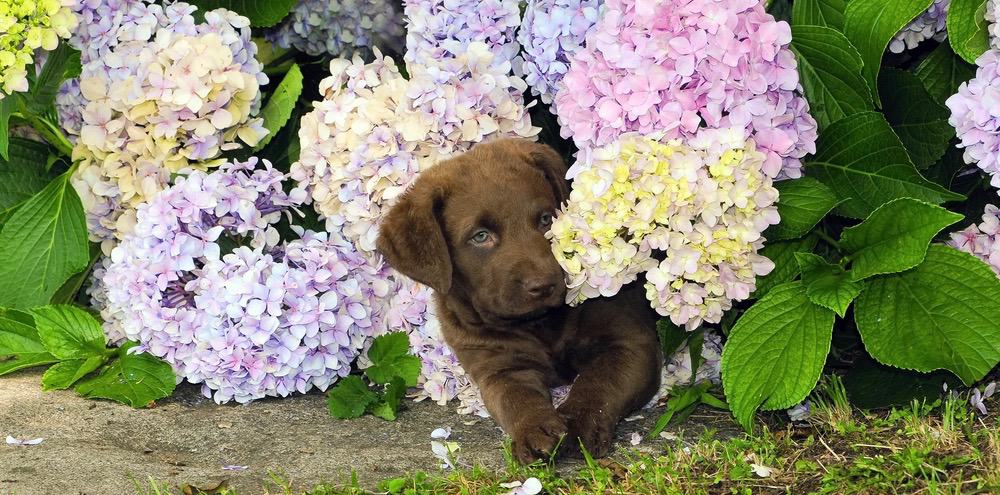
The following is what you can expect throughout the growth stages of your Chesapeake Bay Retriever:
Birth – 2 Weeks
This phase is known as the neonatal or newborn stage. During this phase, the puppy gets their nutrition from the mother’s milk and the mother does most of the job including cleaning the puppy and keeping them warm as they are not able to regulate their body temperature.
The puppy is completely blind and deaf at this stage because the eyes and the ears are not yet developed and closed. That is why they spend most of their time sleeping and eating.
3 Weeks – 12 Weeks
At three weeks, the puppy’s ears, and eyes open and they start becoming aware and curious of their environment and littermates.
At four weeks, their first teeth come out and the breeder can introduce solid food to them in small amounts.
At 8 weeks, the puppy should be fully weaned and depend on puppy food for their nutrition, making them ready to move out to their new home.
Housetraining, socializing, and other forms of training should be introduced at this stage.
When the puppy is three months old, you can start exercising them slowly so that they maintain a healthy weight as they grow. You should also speak to your vet about deworming and vaccinating your puppy.
4 Months – 9 Months
This is the adolescent stage where the puppy shows increased territoriality, stubbornness, and disobedience.
Therefore, more socialization and training are necessary at this stage to ensure that the puppy knows their position in the family.
They will show their dominance at this stage as well and may want to be the leader of the pack.
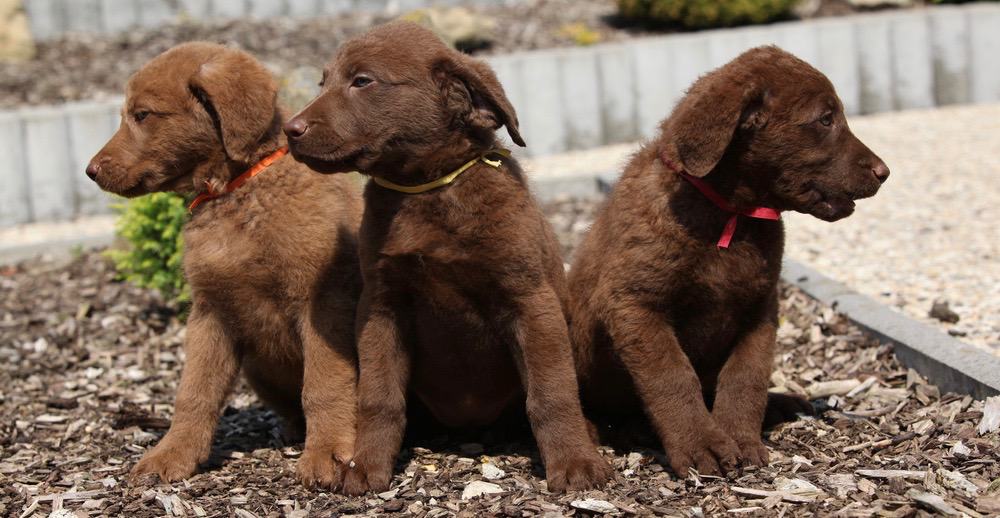
This is also the period where the permanent teeth erupt, and your puppy begins chewing and will try to eat anything that comes across their eyes.
The puppy will also show signs of fear and you should show your support and reliability in this phase so that you can develop trust between you and your puppy.
You can also spay or neuter your puppy at this stage, but you should speak to your vet about it.
10 Months – 18 Months
This is the stage where your puppy starts showing their behavioral characteristics by becoming friendly, strong-willed, balanced, good-natured, and obedient.
However, they need more education and training to make sure that the traits are fully portrayed as adults.
This is the stage to feed your puppy adult food as they are transitioning into adulthood. The process should be done gradually to prevent causing issues with your dog’s stomach.
Adult
As adults, they are considered physically, mentally, and sexually mature. They reach their physical maturity at around the age of between 12 and 18 months. Their emotional and mental maturity can take longer.
This is the stage where they need healthy and balanced meals for your puppy as well as exercise them to ensure that they achieve optimal growth, and they live long and happy.
How Big Do Chesapeake Bay Retrievers Get?
There are three ways that you can predict the adult size of your Chesapeake Bay Retrievers including looking at the parents, doing a DNA test, and paw size.
Looking at the size of the parents can tell you how big your puppy will get.
If you bought your Chesapeake Bay Retriever from the breeder, ask them to give you information about the size of their parents and the size of the previous litters so that you can predict your puppy’s size as an adult.
Another way to predict your puppy’s size is to do a DNA test if you do not have access to the parents’ information and you can predict the adult size of your dog with the results.
Finally, you can look at their paw size. If they look oversized next to their legs and body, then they are still growing but if they look proportional to the body, then your puppy has reached their adult size.
Generally, a male Chesapeake Bay Retriever weighs around 65 and 80 pounds with a height of about 23 and 26 inches.
On the other hand, a female weighs around 55 and 70 pounds with a height of about 21 and 24 inches.
Will Neutering/Spaying My Chesapeake Bay Retriever Affect His Growth?
Neutering is the surgical removal of the testicles in male dogs while spaying is the surgical removal of the uterus and ovaries in female dogs.
These procedures should be done when your Chesapeake Bay Retriever is between the ages of six and nine months.
If done too early, your dog’s growth can be affected as the growth plates may not close because of a lack of hormones.
Spaying is beneficial to female dogs because it reduces the risk of mammary cancer, unwanted behavior, bloody vaginal discharge, and pregnancy.
Neutering reduces the risk of testicular cancer, marking in the house, and aggressive behaviors.
Chesapeake Bay Retriever Size Chart
To measure the height of your puppy, let them stand straight on a flat surface, either a table or the floor. If your dog cannot stand still, let a family member or friend help you to hold them still.
Take a measuring tape and measure from the ground to the withers (the highest point between the blades of the shoulders, just below the neck). This will be your dog’s height measurement.
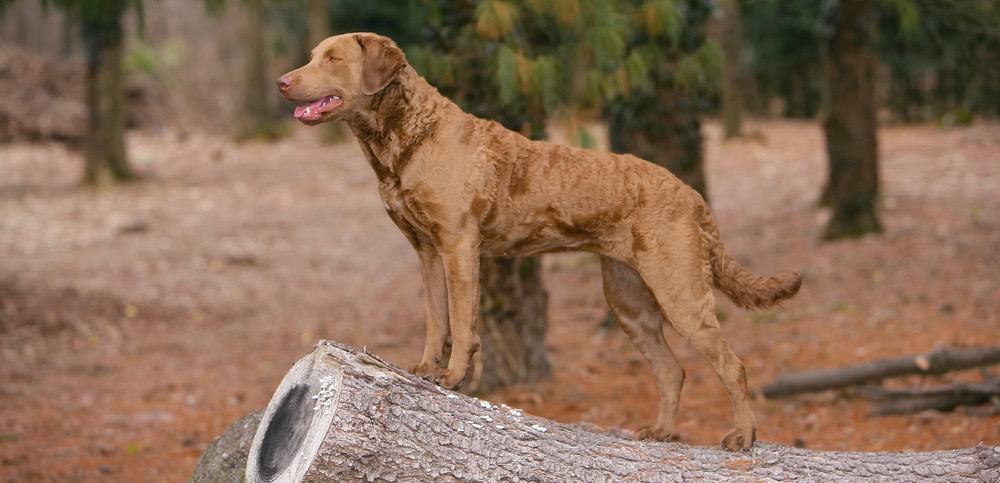
Knowing your dog’s height will enable you to buy them the right clothing, harness, kennel, and kennel door.
Also, if they are participating in competitions and shows, you will be required to present their height measurements.
On average, the height of a male Chesapeake Bay Retriever is about 23 and 26 inches while their female counterpart stands at a height of around 21 and 21 inches.
Golden Retriever vs Chesapeake Bay Retriever Size
Although broadly similar in size, the Chesapeake Bay Retriever can be larger than Golden Retrievers.
The male Chesapeake Bay Retriever stands at a height of 23 to 26 inches with a weight of about 65 to 80 pounds, while male Golden Retrievers stand at a height of around 23 to 24 inches and weigh between 65 to 75 pounds.
Female Chesapeake Bay Retrievers stand at around 21 to 24 inches and weigh between 55 to 70 pounds, which is slightly larger than female Golden Retrievers which stand between 21.5 to 22.5 inches and weigh between 55 and 65 pounds.
Factors That Affect Chesapeake Bay Retriever Growth
Genetics and Gender
Genetics plays a great role in the growth and development of every dog. If you find that the parents were bigger or smaller than the size chart, the puppy too will grow to the same level. The female Chessies are usually smaller than the male ones.
Most importantly, learn about the parent breed so that you can get to estimate the size that your Chessie will grow.
Females are shorter and lighter than males.
Nutrition
It is best to focus on meeting the nutritional needs of your dog. Ensuring that they are drinking clean water and eating healthy food is a way to keep them healthy.
Always consult with your veterinarian to ensure that you provide a healthy diet for your puppy.
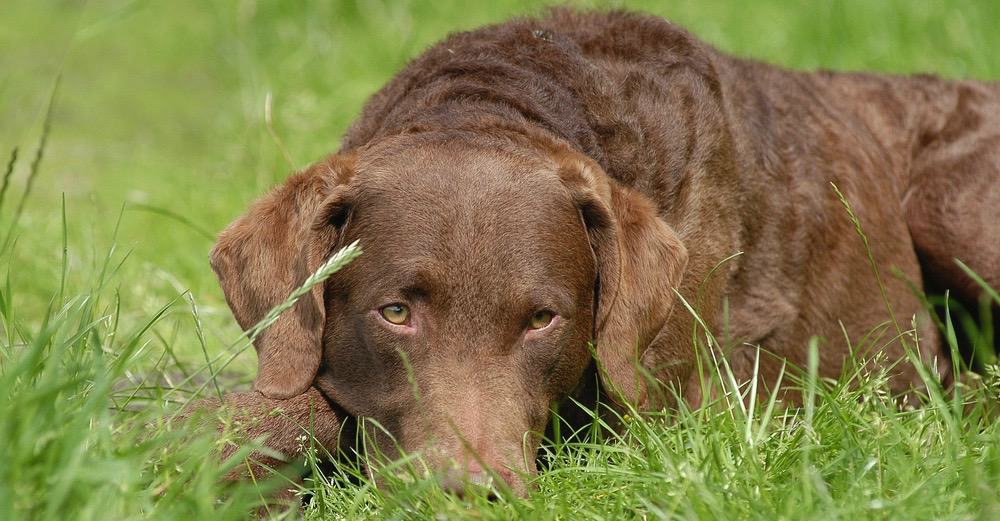
Quality food will nourish your dog. Give your dog the right amount of food to prevent overfeeding. The recommended amount you can give to your Chessie daily is 2-2.5 cups of dry food divided into two meals.
Physical Activity and Health
Chesapeake Bay Retriever is a high-energy breed and needs a lot of exercises. Chessie loves hunting, hiking, running, and swimming. Exercising is good for these dogs because they are playful and love to be out and about.
If you do not exercise your dog, they can get health problems in the long term. Therefore, engage your Chessie in walks, swimming, or short runs to keep them healthy and physically fit.
What If My Chesapeake Bay Retriever is Not the Right Weight?
Consult your veterinarian when your puppy is not the right weight. Every puppy is unique, and the variance in weight should not cause an alarm because this could be who they are. Just like humans, not everyone fits into a size chart because variances happen.
If your veterinarian is not concerned with the weight difference and your dog is healthy all around, then you don’t have to worry.
Charts and guidelines are helpful, but they may hinder certain circumstances because not every dog fits. Therefore, focus on meeting your dog’s nutritional needs by providing healthy meals and freshwater.
Consult with the veterinarian, and if he tells you that your puppy is healthy, you can let it go. It could be a result of genetics too; maybe the parents had the same size, so the puppy will grow to the same size.
Chesapeake Bay Retriever Genetics and Common Health Problems
Chessies are among the most amazing dogs to have at home, but they also have some health concerns that you need to learn before you decide to bring them home:
Hip dysplasia– Active dogs like Chessies are prone to canine hip dysplasia which occurs when the hip joint misaligned with the hip socket.
It leads to scratching of the two components causing inflammation, pain, and irritation. You may find that your dog finds it difficult to walk or put weight on the hind legs.
Bloat – is a dangerous disease where the stomach is being overfilled with air preventing blood flow throughout the dog’s body. It is a medical emergency because it can be lethal.
Bloating can be treated with emergency surgery. You can also prevent it by ensuring that your dog eats at a slow pace.
Hypothyroidism – is caused by the underproduction of the thyroid gland. It causes hair loss, appetite loss, or lethargy in dogs. This condition can be managed through thyroid replacement medication.
Osteochondritis Dissecans (OCD)- is the abnormal development of the cartilage on the bone joint. It occurs between the ages of 6 to 9 months. Dogs can survive without surgical interventions in some cases, but surgery might be required to realign the joint.
Final Words
Hopefully, this article has provided all the essential information you need to know about the Chesapeake Bay Retriever growth chart so that you can monitor the development of your Chessie.
Chesapeake Bay Retrievers are sporting dogs and need plenty of exercises to make use of their energy and stay active.
Therefore, you should be able to provide them with the exercise that they need so that they do not become destructive.
They require minimum grooming care as they only need occasional brushing to control the oil in their coat and keep it in good condition.
Regular visits to the vet will ensure that you catch any health condition at an early stage.

